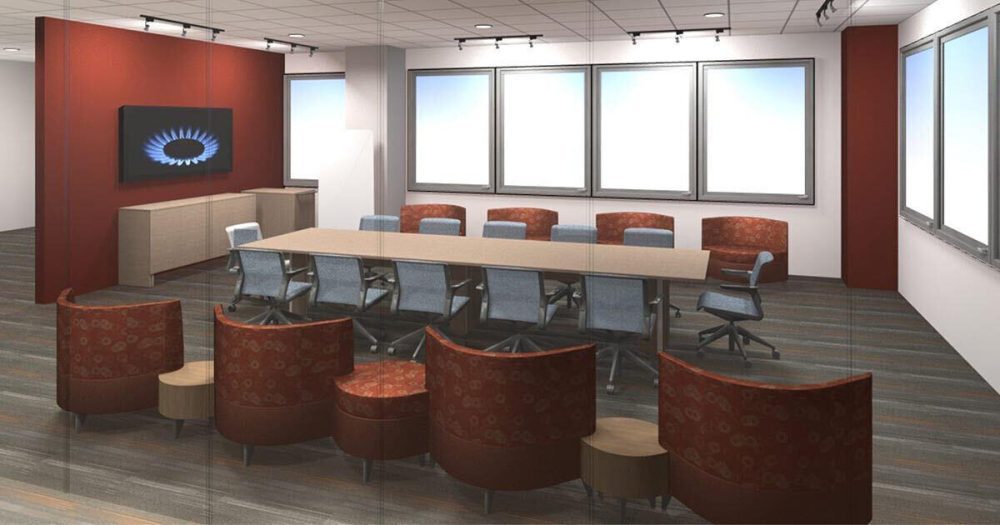Conference rooms are necessary for any business. They give an area for employees to gather to think and collaborate on initiatives. They are frequently utilized as conference rooms with potential consumers to close deals.
Before building the optimal conference room, numerous elements must be considered: What will it be primarily utilized for? How many people are going to use it? What type of technology is needed?
Here are 5 conference room design recommendations to help you create the ideal meeting environment.
Location
The meeting room’s location is critical. It must be centrally positioned so that all employees can quickly use it, but it must not be in a noisy area, such as adjacent to the cafeteria, where meetings may be disrupted.
The location is also determined by the number of individuals that will be attending the conference. If your client requires a large space that can accommodate 16 people rather than just 8, you’ll need to find/build a room that can comfortably accommodate all of those people.
Table arrangement
Every conference room requires a table that can be used in a variety of ways. Naturally, the length of the table you’ll need to purchase is affected by the number of individuals who will be using the conference room.
You can choose between a standard boardroom table that runs along the center of the room, a U-shaped table that allows for easier involvement with the meeting’s presenter, and a collaborative work desk that allows employees to work together more efficiently.
The arrangement you choose is heavily influenced by the primary use of the conference room, so consult with your customer beforehand.
Lighting
If you want to nail your conference room design, you must provide adequate illumination. In general, natural illumination is always preferable to artificial lighting. In a conference room, however, there will very certainly be presentations that will make use of projectors and displays. As a result, you must ensure that the windows are covered with blinds or shades to prevent glare from the sun during presentations.
Aside from natural light, you’ll incorporate artificial lighting into the design of your conference room. If at all possible, avoid utilizing overhead illumination. Task lighting is more effective and gentler on the eyes.
Technology
Technology is included in all current conference room designs. There’s no getting around it: the days of plain blackboards and whiteboards are over. We now use projectors, screens, smartboards, and various audio and video conferencing devices.
The placement of screens and smartboards is critical for a pleasant meeting experience. Measure the proper distance between the screen and the audience, keeping in mind all the accessories, connections (which must be hidden), and speakers that must also be mounted.
The conference room’s decor must be consistent with the rest of the facility
If you are building a conference room for a tech start-up with young professionals, you can be a little more playful and imaginative with your design.
If you’re creating for a legal company where lawyers meet with clients in the conference room, you’ll need to go with a more conservative and elegant-looking design using interior design software.
Finally, conference room design and decor should be consistent with the firm as a whole and should be based on the principal usage of the space. To close the deal, you can utilize professional office design software to create conference rooms and show your clients 3D representations of the area.




































